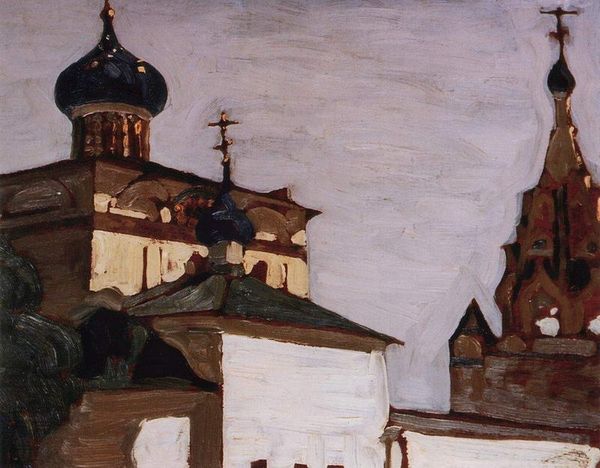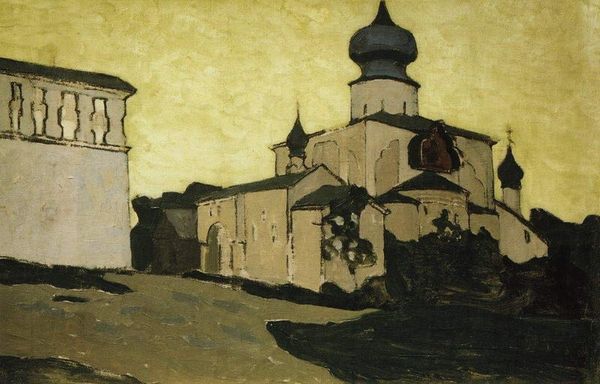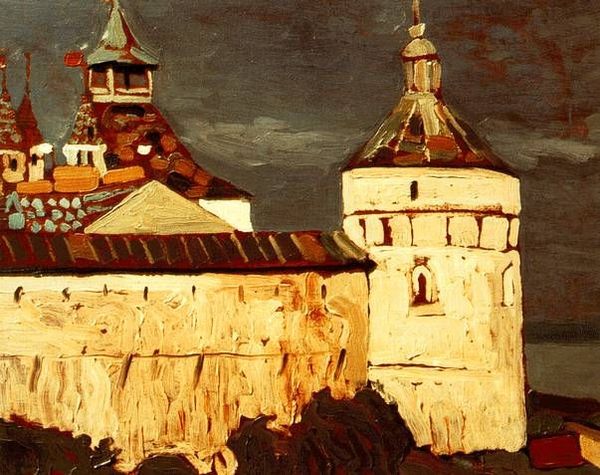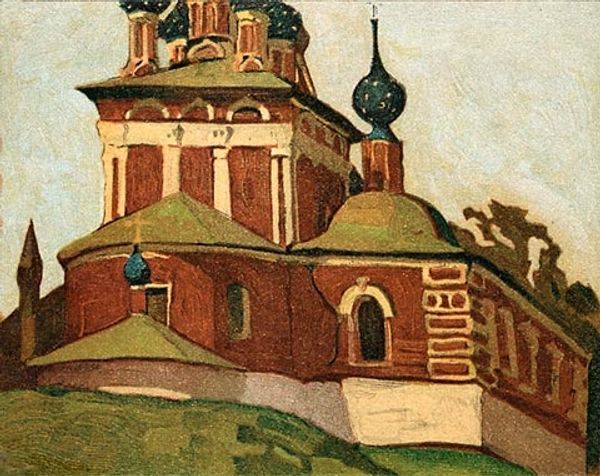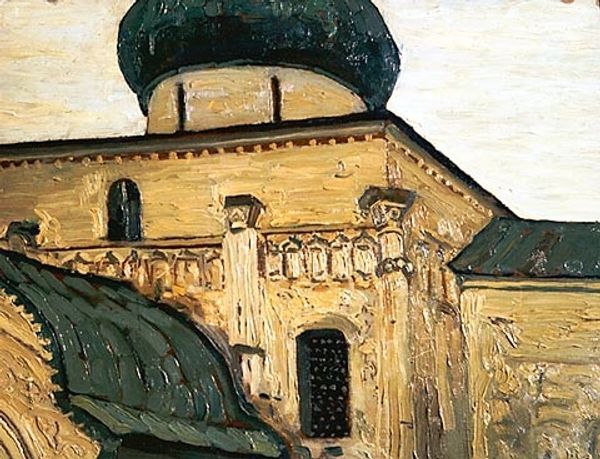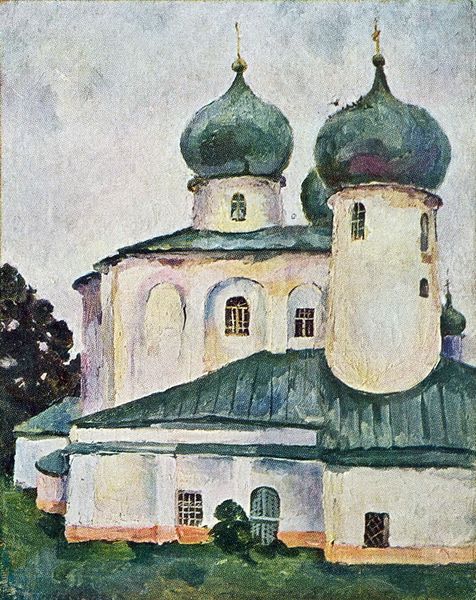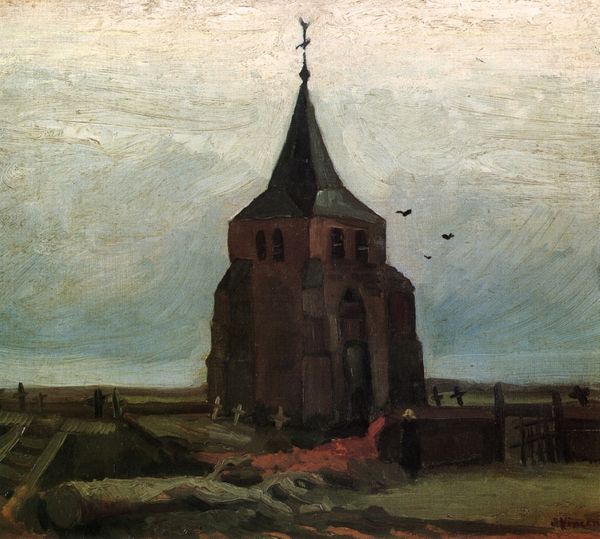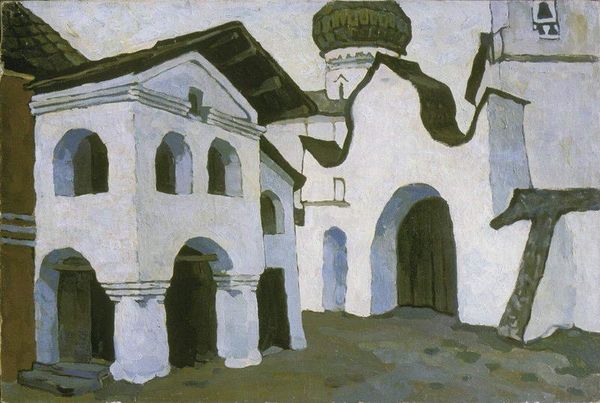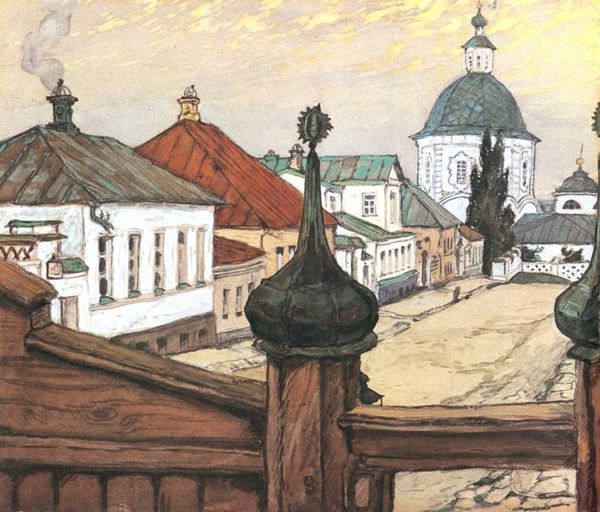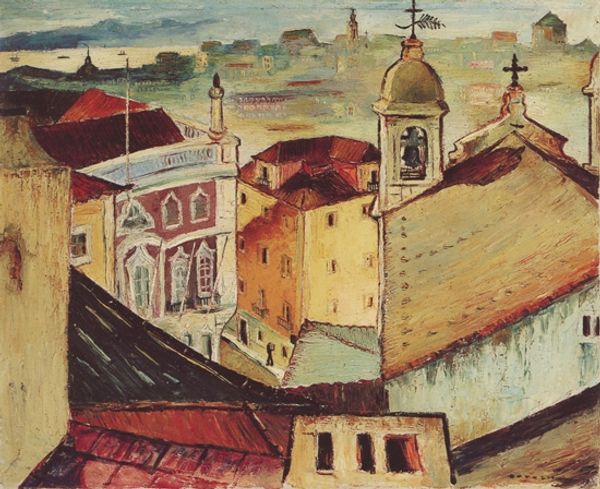
painting, oil-paint, architecture
#
painting
#
oil-paint
#
landscape
#
oil painting
#
arch
#
russian-avant-garde
#
architecture
#
realism
#
building
Copyright: Public domain
Editor: We’re looking at "Suzdal. Alexander Nevsky Monastery," an oil painting by Nicholas Roerich from 1903. It has a subdued, almost melancholic quality, and the architectural forms feel heavy, weighted down. What do you see in this piece? Curator: It resonates deeply with Russia’s spiritual history, doesn't it? Look at the layering of those ochre and brown tones – they speak to age, to endurance. Those crosses atop the structures aren't mere decoration; they're potent symbols, anchoring the composition in a rich religious and cultural narrative. Editor: I hadn’t really considered how the colors themselves contribute to that sense of history. So, the palette is almost a character? Curator: Precisely! And consider Alexander Nevsky himself – a saint, a protector of Russia. Roerich's choice to depict the monastery dedicated to him suggests a rumination on Russian identity, resilience, and the weight of its past. What do you think the brushstrokes themselves communicate? Editor: They seem quick, almost like Roerich was trying to capture a fleeting feeling, rather than photographic detail. A mood? Curator: Exactly! And isn't it interesting how those architectural forms, despite their solidity, almost seem to dissolve into the muted sky? It speaks to a kind of ephemeral quality, reminding us that even the most enduring structures are subject to time. Editor: I guess I was focusing on the stillness, but there’s a tension there too. Something about permanence versus…disappearance. Curator: Indeed! Roerich invites us to contemplate that tension. It seems like he wants us to ponder not just the physical presence of the monastery, but the deeper, perhaps more fragile, essence of the spiritual and cultural values it represents. Editor: That makes me look at the painting differently. It's more than just a building; it's a vessel for ideas and memories. Curator: It holds many meanings, reflecting not only religious and cultural continuities, but psychological states of identity and endurance.
Comments
No comments
Be the first to comment and join the conversation on the ultimate creative platform.
